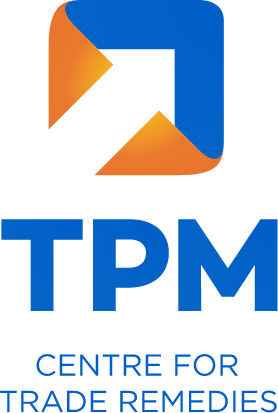Product description – The product under consideration is “Chlorinated Polyvinyl Chloride – whether or not further processed into compound (CPVC)”.
HS Codes – The product is classified under 39049010 and 39049090. However, the product is also imported under 39041010, 39041020, 39041090, 39042100, 39042200, 39045090, 39044000, 39043090, and 39046990.
Uses – Mainly used as a material for water piping systems in residential and commercial construction, hot and cold-water plumbing distribution both at residential and commercial areas, fire protection, reclaimed water piping, hydronic piping and distribution and is used in many industrial piping applications.
Countries involved – China PR and Korea RP.
Applicant – DCW Limited.
Date of imposition of duty – Original duty was imposed on 26th August 2019.
Date of initiation – 29th December 2023.
Period of investigation – 1st July 2022 to 30th July 2023 (12 months).
Injury period –2019-20, 2020-21, April 2021 – June 2022 and the period of investigation.
Recommended duty –
| Country | Producers | Specification | Duty (USD/MT) |
| China PR | Others | CPVC Resin | 790 |
| China PR | Others | CPVC Compound | 605 |
| Korea RP | Hanwha Solution Corporations | CPVC Resin | 593 |
| Korea RP | Hanwha Solution Corporations | CPVC Compound | 792 |
| Korea RP | Others | CPVC Resin | 593 |
| Korea RP | Others | CPVC Compound | 792 |
Key findings-
- The Authority had imposed benchmark form of duty in original investigation due to large demand supply gap and industry was at nascent stage. However, in the present investigation, the circumstance has materially changed as various producers are setting up their plant of product which do not form change
- The imposition of anti-dumping measure has allowed the Indian industry to flourish. Prior to imposition of anti-dumping measures, DCW was the only producer in India. Post the imposition of measures, Epigral Limited has also established the production capacity of 30,000 MT and will further expand capacity upto 75,000 MT. DCW Limited too has expanded its capacity after the imposition of measures. Additionally, Lubrizol is setting up new plant of 100000 MT of CPVC resin and commercial production is likely to commence in 2025.
- Despite there being no difference in the product properties, there is a wide difference in the import price of CPVC resin from China cleared in the duty free and duty paid market. While the price of duty-free imports fluctuated over the injury period, the prices of duty paid imports has remained almost at the same level around the benchmark.
- Despite changes in the prices of raw material, the CIF import price did not move in tandem with the input price. The import price is majorly aligned with the benchmark levels.
- The export price to other countries in the post period of investigation has declined to about 1000$/MT whereas the export price to India has remained at benchmark form of measures.
- The producer from Korea RP is exporting more than 50% of their production showcasing export orientation.
- Capacities in China PR are 157% and 119% of the demand in China PR of CPVC resin and compound respectively which shows excess capacities with Chinese producers. Despite having excess capacities, the Chinese producers is undertaking further capacity expansion.
- Majority of the exports from subject countries to third countries are at dumped prices and at injurious prices.
- The import price in duty free market is below the cost and price of the domestic industry resulting in price undercutting.
- DRI has found evidence that higher than actual value was being declared before the custom authorises, and no anti-dumping duty was being paid.
- Consumers have imported from the subject as well as non-subject countries and price from non-subject countries is higher than the price from subject countries. This shows that the price of the downstream product is inelastic to the price of resin or compound.
- The consumers imported from subject as well as non-subject countries and price from non-subject countries is higher than the import price from subject countries. This itself shows that the price of the downstream product is inelastic to the price of resin or compound.
- The impact of anti-dumping duty on end consumer is found insignificant.
- Hanwha made different submissions for pricing methodology at different time to different markets which casts doubts over the reported export price to India.
- The dumping margin and injury margin determined was negative. However, the margins were impacted by benchmark form of measures.
- The Authority has modified the anti-dumping duty from benchmark to fixed form by considering the dumping margin and injury margin determined in the original investigation.

